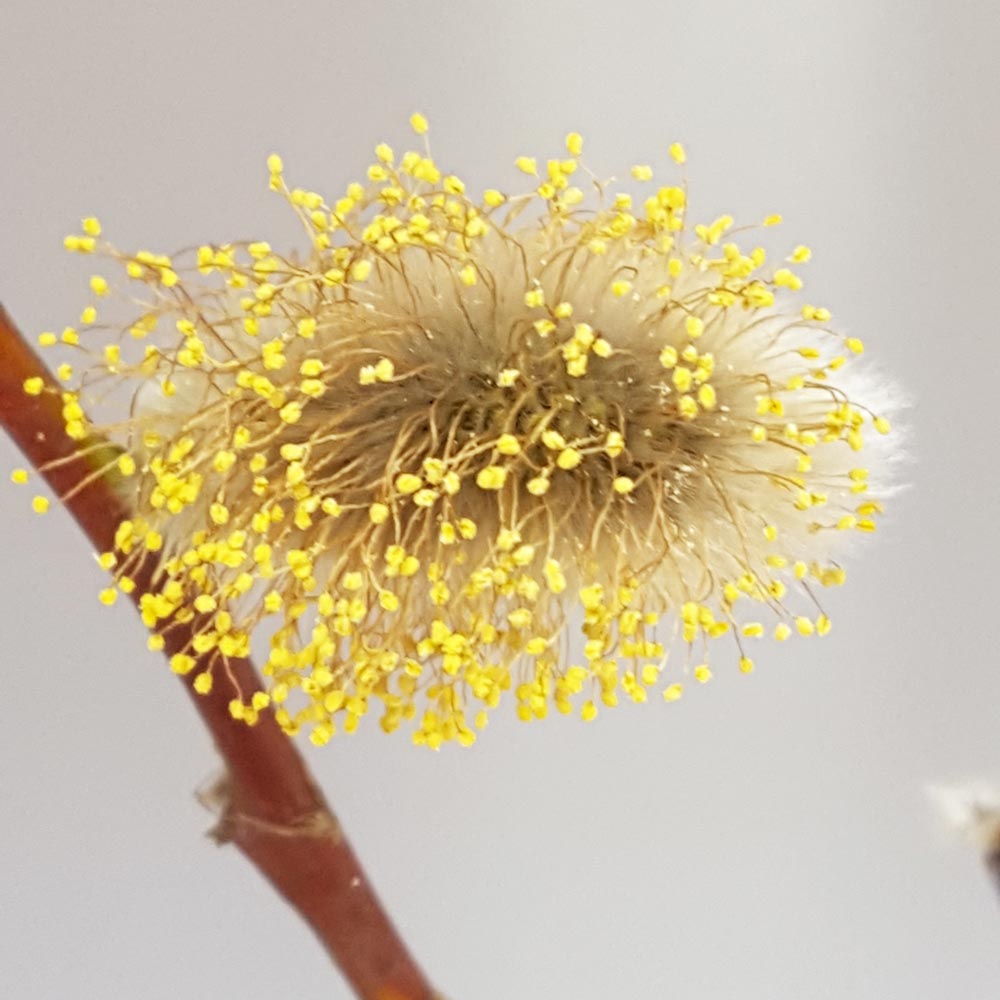 Back in January we hit our lovely local park one morning after a few stormy days and found some fallen pussy willow twigs in the playground.
Back in January we hit our lovely local park one morning after a few stormy days and found some fallen pussy willow twigs in the playground.
Even in January, the willow was already bursting with catkins.
Popping out of their protective black shells.

We admired and stroked the gorgeously smooth pussy willow fur.

And back home popped our fallen pussy willow twigs in some water on the kitchen table for an incredibly simple but powerful plant science experiment that lets children see how some plants can - quite fabulously - grow roots from fallen or cut parts to create a new plant and propagate themself.

We kept watching our storm battered little willow twigs in their bottle on the kitchen table and after a week or so they started to work their wonderful spring magic and grow new roots ...

And just a week or after the roots appeared new green shoots appeared on our little willow twig ... and grew and grew ...

And finally to show just how alive this new plant is those sleek little pussy willow tails opened out to show off their pollen.
They're looking scruffy now but it's been fascinating to inspect the pollen grains up close.

We're going to plant a few twigs in the garden and see if we can grow a little willow hedge. Hopefully it will do its bit to soak up some of the ground water that has become such a problem in our marshy old bit of south London now so many gardens are paved over.
The pollen-tastic willow is also a wonderful winter and early spring friend for our struggling bees when there are few flowers around.
To have a go at this simple plant science experiment for kids simply collect fairly freshly fallen twigs from a willow tree. It's good to go out after a storm or windy night to collect the twigs as you're more likely to find fresh ones but can also use the opportunity to talk with kids about the creative as well as destructive aspects of weather and storms in migrating plants.
If you can't find any willow trees you can alternatively root birch, elm or alder twigs. I do think willow is particularly fun because their pollen rich catkins are so fabulous but the alder and birch also have interesting catkins that let children explore plant seeds and lifecycles and different plant propagation strategies.
So there you go an incredibly simple plant science experiment to explore nature with children that gives them a really powerful abiding visual understanding of the role of rooting and regrowth in plant life cycles.
For more simple but powerful plant science experiments and nature activities do check out these posts and follow me on Pinterest :
- Growing Mushrooms With Kids
- Dissecting Daffodils With Kids
- See Like A Bee Nature Hunt
- Petal Paintings To Explore Pollination
- Feather Writing On Tree Bark






americanlamboard.com says
The children made pussy willows in preschool today! They started out by exploring a real pussy willow . The class I observed making the pussy willows was a threes class… They used thicker brushes and some of the children really liked that brown paint…
Alice says
Oh that sounds fantastic - what a lovely activity